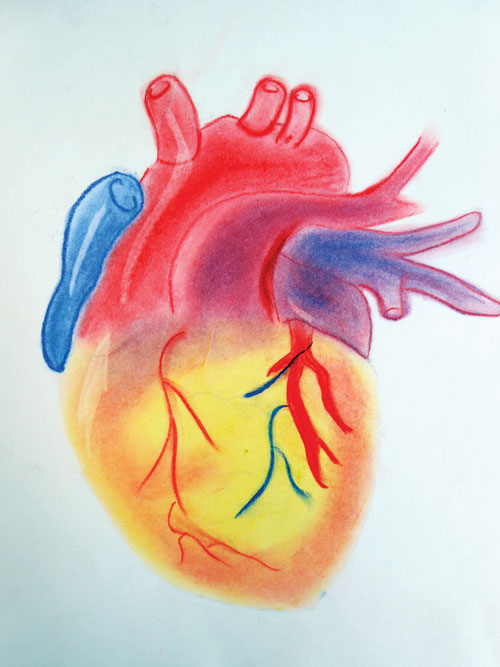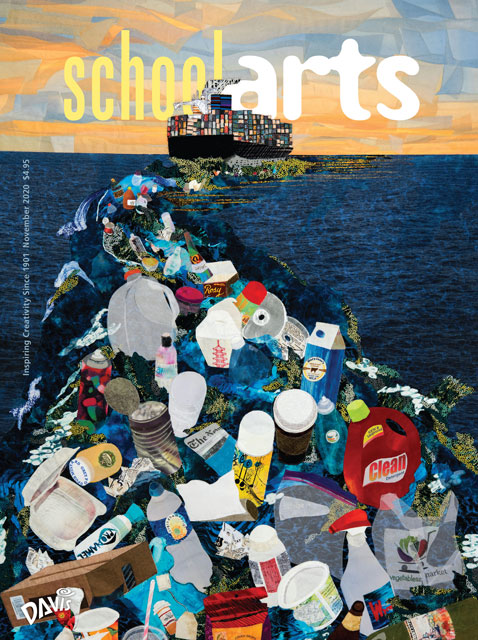.jpg) |
| Taylor S., virus. |
Most art careers are technologically driven, but each is built strongly on a foundation of the basic elements of art and principles of design, as well as fundamental drawing skills.
Developing the Lesson
Because we reside in an area famous for its medical university, I was inspired to develop a lesson around medical illustration. I also felt it would be a great opportunity to include some cross-curricular connections within the lesson, with the goal of having students’ works displayed on the campus of our local medical university.
Prior to introducing this lesson, I shared my plans with our science department, and they were willing to give extra credit to students who took anatomy or biology, something students were very pleased to hear.
Engaging Students
Students were introduced to the field of medical illustration through online research and a web video that demonstrated a medical illustrator at work. Once students were aware of the background needed to become a medical illustrator, as well as the possible earnings, I explained the objectives of the lesson.
 |
| Caleb J., heart. |
Researching a Subject
I asked students to choose a subject for their work from the areas of human anatomy or molecular biology. Students were instructed to produce two works in either black-and-white or color. Once students decided on their subjects, they were responsible for researching and writing a brief synopsis about them.
Illustrating
After choosing and researching their subjects, students sketched their ideas on paper, emphasizing an interesting composition through perspective. (I encouraged cropping, which could be achieved by using a handmade viewfinder.) After sketching was completed, students had the choice of putting their final pieces on 11 x 14" (28 x 35.5 cm) or 18 x 24" (46 x 61 cm) paper. They could work in pen or ink, colored pencil, pastel, or a combination of the three.
.jpg) |
| Shania B., arteries. |
Community Exhibition
The most rewarding part of this lesson was having students’ illustrations curated and displayed at the Robert B. Greenblatt Library on the campus of Augusta University. Students met with the medical archivist/curator and they got to hang their own works! Make your next lesson on art careers a community connector.
Audrey Crosby taught this lesson at Josey Comprehensive High School in Augusta, Georgia.
View this article in the digital edition.


.jpg)

.jpg)
